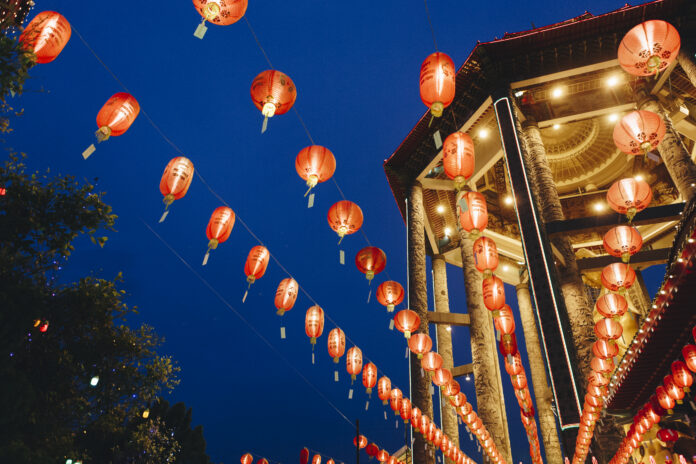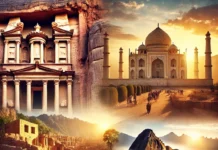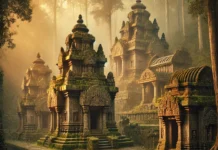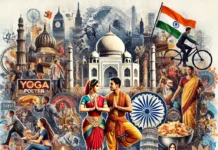Celebrating Culture: Festivals, Exhibitions, and Their Impact on Society
Cultural events and festivals are more than just celebrations; they are vivid expressions of humanity that unite people, showcase diverse heritages, and strengthen community bonds. Whether through global festivals or local exhibitions, these events play a crucial role in preserving cultural identities and fostering social and economic growth. As societies evolve, cultural events remain essential platforms for exchange, education, and preservation, making them integral to the fabric of communities worldwide. This article delves into the significance of these events, their lasting impact, and the emerging trends shaping their future.
Global Festivals: A Tapestry of Traditions
Across the world, cultural festivals reflect the diversity of human expression. From the lively Carnival in Brazil to the serene Diwali in India, these festivals offer a glimpse into the heart of different cultures, celebrating everything from religious beliefs to seasonal changes and historical milestones.
Diwali (India)
Known as the Festival of Lights, Diwali symbolizes the victory of light over darkness and good over evil. It’s a time when families come together, homes are illuminated with lamps, and communities celebrate with fireworks and feasts. Diwali is deeply rooted in Indian culture, reflecting its ancient traditions and religious beliefs.
Chinese New Year
Celebrated worldwide, this festival marks the beginning of the lunar New Year with dragon dances, lantern festivals, and family reunions, symbolizing renewal and the importance of family. Chinese New Year is a time-honoured tradition that reflects the values of family, prosperity, and cultural continuity.
These global celebrations not only preserve cultural heritage but also promote cross-cultural understanding by allowing people from different backgrounds to participate and learn.
Cultural Exhibitions: Preserving and Showcasing Heritage
Cultural exhibitions are vital in preserving and showcasing the artistic and historical wealth of societies. Museums, art galleries, and cultural centres around the world serve as custodians of heritage, offering the public access to priceless artifacts, artworks, and traditions. These institutions play a crucial role in ensuring that cultural heritage is not only preserved but also appreciated by future generations.
National Museum, New Delhi: A Gateway to India’s Heritage
The National Museum in New Delhi is a premier cultural institution that showcases India’s rich heritage spanning over 5,000 years. The museum features artifacts from the ancient Indus Valley Civilization, Mughal miniatures, traditional textiles, and more. Special exhibitions highlight regional cultures, folk traditions, and classical art forms, providing a comprehensive view of India’s diverse cultural heritage.
Chhatrapati Shivaji Maharaj Vastu Sangrahalaya (CSMVS), Mumbai
Formerly known as the Prince of Wales Museum, CSMVS in Mumbai is one of India’s most significant museums. It boasts an impressive collection of ancient sculptures, decorative arts, and manuscripts, reflecting India’s artistic achievements. Exhibitions often focus on themes like India’s maritime history and royal heritage, promoting a deeper understanding of India’s cultural legacy.
Kalakshetra Foundation, Chennai: Preserving India’s Performing Arts
The Kalakshetra Foundation in Chennai is a cultural academy dedicated to preserving India’s traditional arts. Known for its classical dance and music, Kalakshetra also curates exhibitions and performances showcasing the arts of India. The foundation plays a crucial role in preserving and promoting India’s performing arts heritage.
The Smithsonian Institution (USA)
This group of museums and research centers in Washington, D.C., offers exhibitions that cover a vast range of cultural and scientific subjects, making it one of the most comprehensive cultural institutions globally. The Smithsonian’s collections preserve the cultural heritage of the United States and the world, from ancient artifacts to modern innovations.
The British Museum (UK)
Known for its extensive collection of art and antiquities from around the world, The British Museum provides insights into human history and culture through its exhibits. The museum’s collections tell the story of human civilization, from the earliest artifacts to the complexities of modern societies.
They also serve as educational platforms, offering visitors a deeper understanding of history, art, and culture.
The Impact of Cultural Events
Cultural events have a profound social impact, fostering community cohesion and a sense of belonging. They are also significant economic drivers, generating income through tourism, creating jobs, and stimulating local economies. The impact of these events extends far beyond the days of celebration; they leave lasting impressions on societies and economies alike.
Social Impact
Cultural festivals and exhibitions offer people a chance to connect with their roots, celebrate their identity, and engage in cultural exchange. These events promote inclusivity and understanding, bridging gaps between different communities. They also serve as platforms for dialogue, where people can learn about and appreciate diverse cultures, fostering a sense of global citizenship.
Cultural Exchange
International festivals and exhibitions encourage cultural exchange, where artists, performers, and audiences from different countries share their traditions and learn from each other. This exchange enriches global culture and fosters mutual respect. By participating in these events, people gain a deeper understanding of different cultures, which can lead to greater empathy and cooperation on a global scale.
Emerging Trends in Cultural Events
As the world evolves, so do the ways we celebrate and preserve culture. New trends are emerging that are reshaping the landscape of cultural events, making them more inclusive, accessible, and sustainable.
Virtual Festivals
The COVID-19 pandemic accelerated the shift towards virtual events, with many festivals and exhibitions moving online. While this posed challenges, it also created opportunities for wider participation, allowing people from across the globe to join in without physical travel. Virtual festivals have opened up new possibilities for cultural engagement, enabling people to experience global traditions from their homes.
Interactive Exhibits
Museums and cultural centers are increasingly incorporating interactive technologies, such as augmented reality (AR) and virtual reality (VR), to create immersive experiences. These innovations engage younger audiences and make cultural heritage more accessible and exciting. Interactive exhibits allow visitors to explore cultural artifacts in new ways, making the experience more personal and engaging.
Regional Focus: Celebrations Around the World
Different regions of the world celebrate culture in unique ways, often reflecting their history, environment, and societal values. These celebrations offer a window into the diverse ways that people around the globe connect with their cultural heritage.
Africa
Festivals like the Ouidah Voodoo Festival in Benin celebrate spiritual traditions, while cultural events like the Cape Town International Jazz Festival highlight the continent’s rich musical heritage. These events showcase Africa’s diverse cultures and play a vital role in preserving traditional practices and promoting cultural exchange.
Europe
In addition to Oktoberfest, Europe hosts many historical re-enactment festivals, such as Spain’s La Tomatina, a massive tomato fight that brings people together in a fun and unique way. These festivals reflect Europe’s rich history and its love of celebration, offering a blend of tradition and modernity.
Conclusion
Cultural events and festivals enrich our lives by showcasing the diverse ways people live and express themselves. Celebrating these traditions, whether in person or online, helps preserve and share our cultural heritage across generations. These events connect us to our past and each other, fostering a global community that values cultural diversity. From ancient festivals to modern digital exhibitions, they remind us of culture’s power to inspire and transform. By embracing both tradition and innovation, we keep these celebrations vibrant and meaningful for the future.







